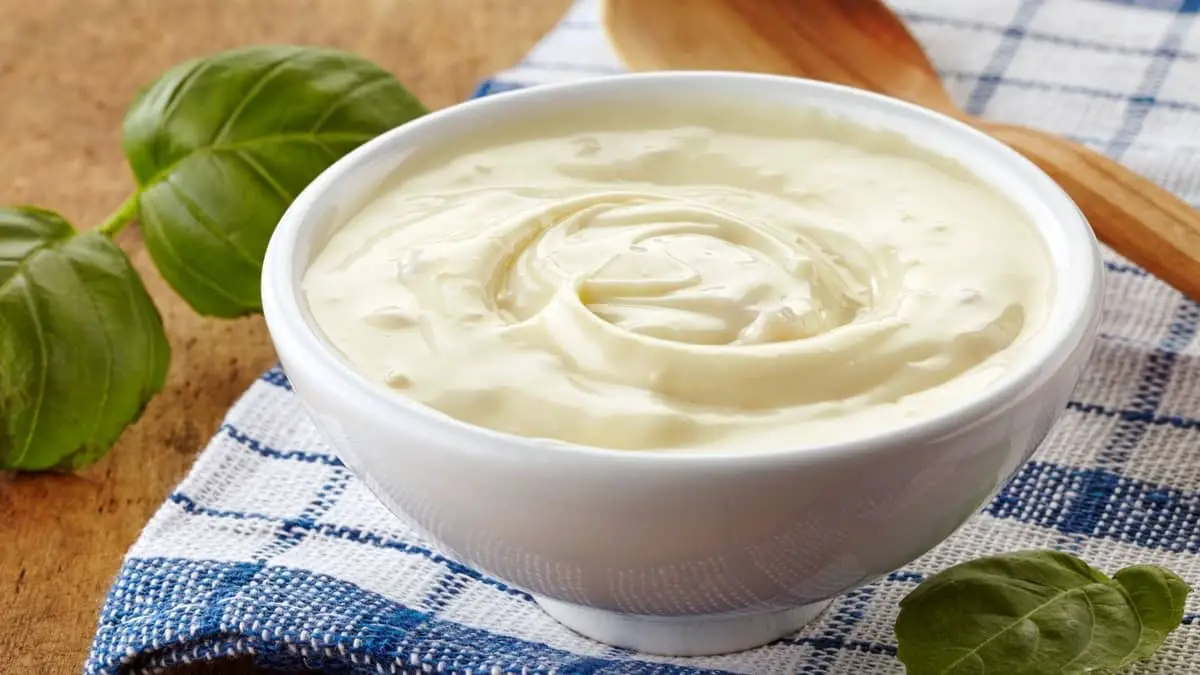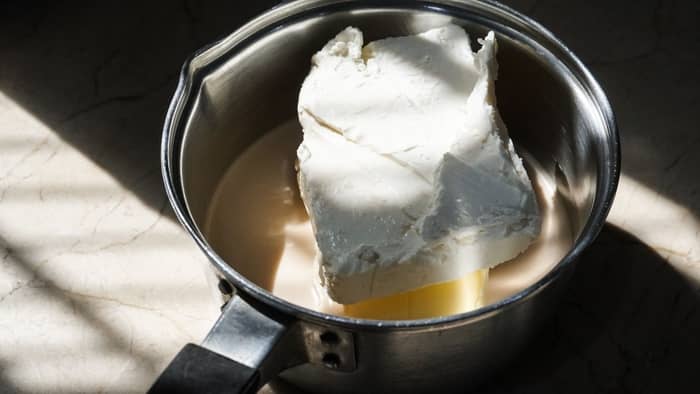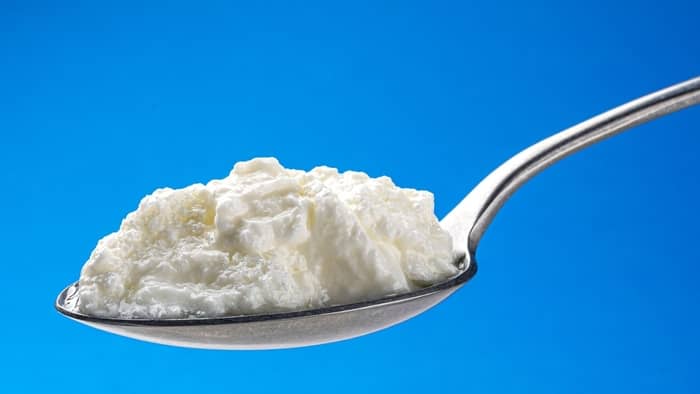Last Updated on April 9, 2024
Does cream cheese melt? Yes, you undoubtedly can melt cream cheese. Knowing how to melt cream cheese is beneficial if you bake or cook regularly.
You may do so in the microwave or on the stovetop. Whatever you may choose, it is possible.
Also, please take note that cream cheese usually melts around 130 degrees Fahrenheit or 55 degrees Celsius. Keep in mind that when it attains 90 degrees Fahrenheit or 32 degrees Celsius, it will soften. The main reason is that solid milk fat begins to liquefy. The cream cheese’s acidity and fat content will determine how much heat, including the time it requires to melt.
Does Cream Cheese Melt?
Yes! But first, you may want to learn how to soften the cream cheese for a bit. It is indeed beneficial to learn how to soften cream cheese when making cheesecakes.
Essentially, you can soften cream cheese without heat. Usually, you can leave the cream cheese out on your countertop. Because of this, it will soften over time.
Nonetheless, there are different ways to quicken the softening process. As a result, you won’t need to wait all day.
Before anything else, it is essential to remove the wrapping from the cream cheese. Afterward, make sure to cut the cream cheese up into cubes. Keep in mind that this helps to soften the blocks faster.
Then, ensure to transfer the cream cheese blocks to a plate. After that, be sure to loosely cover it with cling wrap.
Next, leave your cream cheese to sit on the counter. Be sure to do it for around thirty minutes. Likewise, you can let it sit for approximately an hour. Remember, only do so when it is still a big block.
Afterward, touch down on the cling wrap to check if your cream cheese has softened. With this, be sure to press gently. If it did not soften yet, you could leave it again for another fifteen minutes.
Read more about Cream Cheese Sugar Content.
How to Melt Cream Cheese in The Microwave
For starters, the microwave technique is the most effective way to soften or melt cream cheese in a short duration. It is quicker than heating it in a water bath or leaving it on the counter. In addition to that, it is entirely safe to microwave cream cheese.
Although, you should never microwave if you wrapped the cream cheese in the original foil packaging. With that, keep in mind that aluminum can cause fire when microwaved. That is why it would be best to remove the aluminum foil, so make sure to do this before you melt cream cheese in the microwave.
Nevertheless, the safest way is to always utilize a microwave-safe plate. After that, be sure to divide the cream cheese into cubes. Ensure to do this when required for faster melting.
How to Melt Cream Cheese
For starters, melting cream cheese on the stovetop will take longer than melting it in the microwave. Though, the significant advantage is that you can control the temperature more.
Keep in mind that you can continually monitor the cream cheese’s melting process on the stove. For this reason, there is indeed less risk that the cream cheese will burn.
It would also be best to utilize a double boiler whenever you melt your cream cheese on the stove. But, if you do not own a double boiler, you can always use the primary boiler technique. Make sure to use a pot, bowls, milk, and most importantly, an instant-read thermometer.
Step by Step Instructions in Melting Cream Cheese on The Stovetop
Step 1
First and foremost, start by removing the cream cheese from its wrapping. With this, make sure that there is no wrapping left on the cream cheese. Afterward, put the block of cream cheese into your heat-proof bowl.
Step 2
Then, allow the cream cheese to sit in the bowl for around thirty minutes. Do this only if you have spare time and are not in a rush. After that, slice it up into tiny pieces.
Keep in mind that it helps it melt faster. Not only that, but also it will prevent you from turning the block on the doubler.
Step 3
Next, be sure to fill a pot with water. Afterward, adjust it to high heat on the stovetop. Later, make sure to allow the water to come to a boil.
Step 4
After that, pour 1/4 cup of milk into the bowl onto the pot of boiling water. Though, always check the recipe for the right amount of milk required. Also, ensure that the bowl’s bottom does not come into direct contact with the boiling water.
Step 5
Then, be sure to turn the heat down to medium. Doing this will stop the water from boiling over.
Step 6
Afterward, ensure to utilize an instant-read thermometer. You use this to take the temperature of the milk precisely. Also, put the cream cheese into the bowl. Do this once the milk attains the temperature of 110 degrees Fahrenheit.
Step 7
Finally, be sure to stir the milk, including the cream cheese, together. Do this till the two incorporate completely. Then, make sure to remove your melted cream cheese from the heat and be sure to use it as soon as possible for the best results.
Why Won’t Cream Cheese Melt?
From time to time, your cream cheese will not melt. And it begins curdling because of the unexpected heat change. Also, remember that there are several reasons why curdling happens in dairy products. That is why whenever heating dairy products, keep an eye out for the following reasons.
First off, watch out for excessively high heat. Keep in mind that you only need a low temperature to melt the cream cheese; the main reason is that curdling tends to happen with extreme heat changes.
Moreover, consider that low-fat cream cheese is more likely to curdle compared to whole-fat cream cheese. So, it is best to check if your dairy product has a high-fat content.
In addition, acidic ingredients in the cream cheese can result in curdling. With that, it would be best to blend the recipe ingredients at room temperature. Also, be sure to do this before you add the cream cheese.
Nevertheless, you do not need to worry too much since curdling in cream cheese is fixable. All you have to do is to take away the cream cheese from the heat source. After that, put the bowl in an ice bath. As a result, it will stop the cream cheese’s melting process.
In addition to that, you can pour a cornflour slurry. Doing so stabilizes the sauce but it will affect the taste. However, it will depend on what you are making with the melted cream cheese.
Read more about How To Melt White Chocolate In The Microwave.
Tips for How to Melt Cream Cheese
There are several reasons a person may want to learn how to melt cream cheese. You could be wanting to add it to a sauce or swirl it into a batter. Whatever the reason may be, you want to ensure that you are doing it properly.
In most cases, you don’t actually want to melt cream cheese but instead, you want it softened. For example, you want softened cream cheese for recipes such as cheesecake or cream cheese frosting. If the cream cheese is melted and not softened then it will not work for these recipes as it will completely change the texture of the final product.
Before melting your cream cheese, be sure that the recipe you are making actually calls for melted cream cheese and not softened cream cheese. While you may be able to use softened cream cheese in place of melted cream cheese, you won’t be able to use melted cream cheese in place of softened cream cheese.
Here are four helpful tips for how to melt cream cheese.
1. Achieving the cream cheese melting point
As stated above, the melting point for cream cheese is around 130 degrees Fahrenheit or 55 degrees Celsius. For softening cream cheese, ideally, you want the room temperature to be between 65 to 75 degrees Fahrenheit.
The best way to melt cream cheese is to do it low and slow. Melt the cream cheese on medium to medium-low heat and take your time. Melting cream cheese at high heat can cause it to curdle and become lumpy.
Using medium-low heat is the best way to ensure that your cream cheese will melt smoothly. In addition, with high heat, you risk the chance of your cream cheese boiling or burning, which can ruin it.
If you notice your cream cheese is curdling as you microwave it, change your power setting to 50%. While it will take a bit longer to melt, it will help reduce the chances of the cream cheese becoming lumpy and help it melt smoothly.
2. How to melt cream cheese into sauce
Cream cheese can be a great addition to sauces. It tastes especially delicious in alfredo sauce as it produces an extra creamy and flavorful sauce. To ensure the sauce turns out smooth and creamy, you will want to know how to properly melt cream cheese into the sauce.
To start, you want to make sure that your cream cheese is at room temperature so that it will melt smoothly into your sauce. While it will vary by recipe, you generally want to melt your cream cheese over medium heat with butter. Frequently whisk the cream cheese and butter so it will melt evenly and thoroughly.
It will likely take around five minutes or so for the cream cheese to melt. Once melted, you can whisk it into your other sauce ingredients until smooth and combined.
3. Does cream cheese melt in the oven?
Yes, cream cheese can melt in the oven. However, it is typically not the recommended way to melt cream cheese as it takes longer and can be messy.
If you put a block of cream cheese in the oven it will melt given enough time at the right temperature. However, you don’t have to worry about cheesecakes, cream cheese pastries, or other cream cheese desserts melting in the oven. This is due to the combination of ingredients, temperature, and time the baked goods are baked for.
4. How to melt cream cheese in the soup
Cream cheese can be a great addition to soups. It can create a delicious creamy texture and provide a nice flavor to the soup as well. While cream cheese can be a great addition to soup, it can easily curdle if you do not add it properly.
Start with room-temperature cream cheese and then melt it using the microwave or stovetop method. Once melted, gradually add the creamy cheese to your soup, whisking it as you add it.
Be sure to not add the cream cheese with more than 15 minutes left on your soup’s cook time. Be sure to stir continuously when adding the cream cheese to make sure it gets fully combined into your soup. The heat should be at medium-low when you add the cream cheese because if the heat is too high the cream cheese will not properly combine with the soup.

Zarah is an experienced pastry chef whose creations have delighted countless customers. With a passion for baking, Zarah has developed a unique style that combines classic techniques with modern flavors. Her desserts are consistently crafted with the finest ingredients, and her attention to detail is evident in the stunning and delectable results. Zarah has a wealth of experience in the pastry kitchen, and loves to share her knowledge with others. Whether it is teaching a class or creating a custom cake for a special occasion, Zarah is committed to making sure every customer is satisfied.



